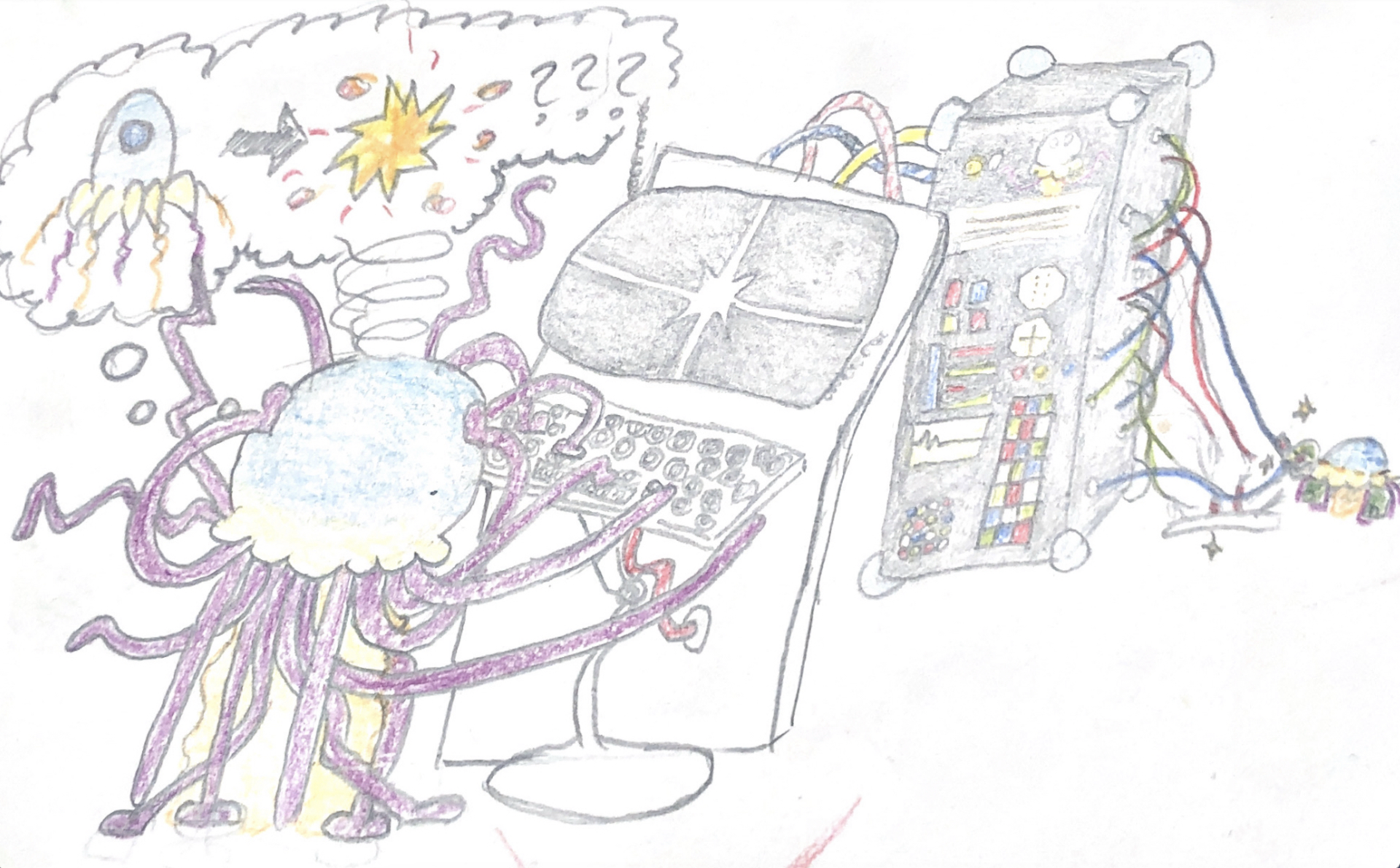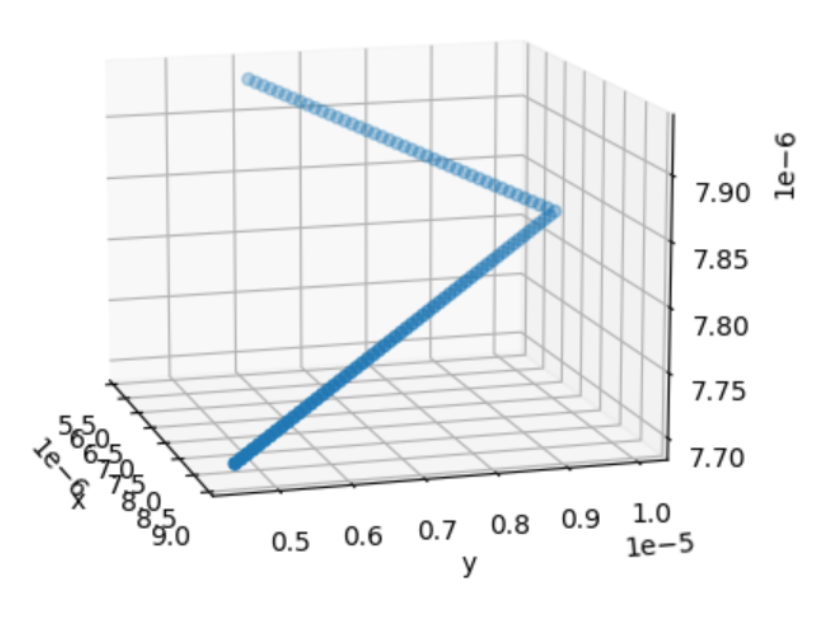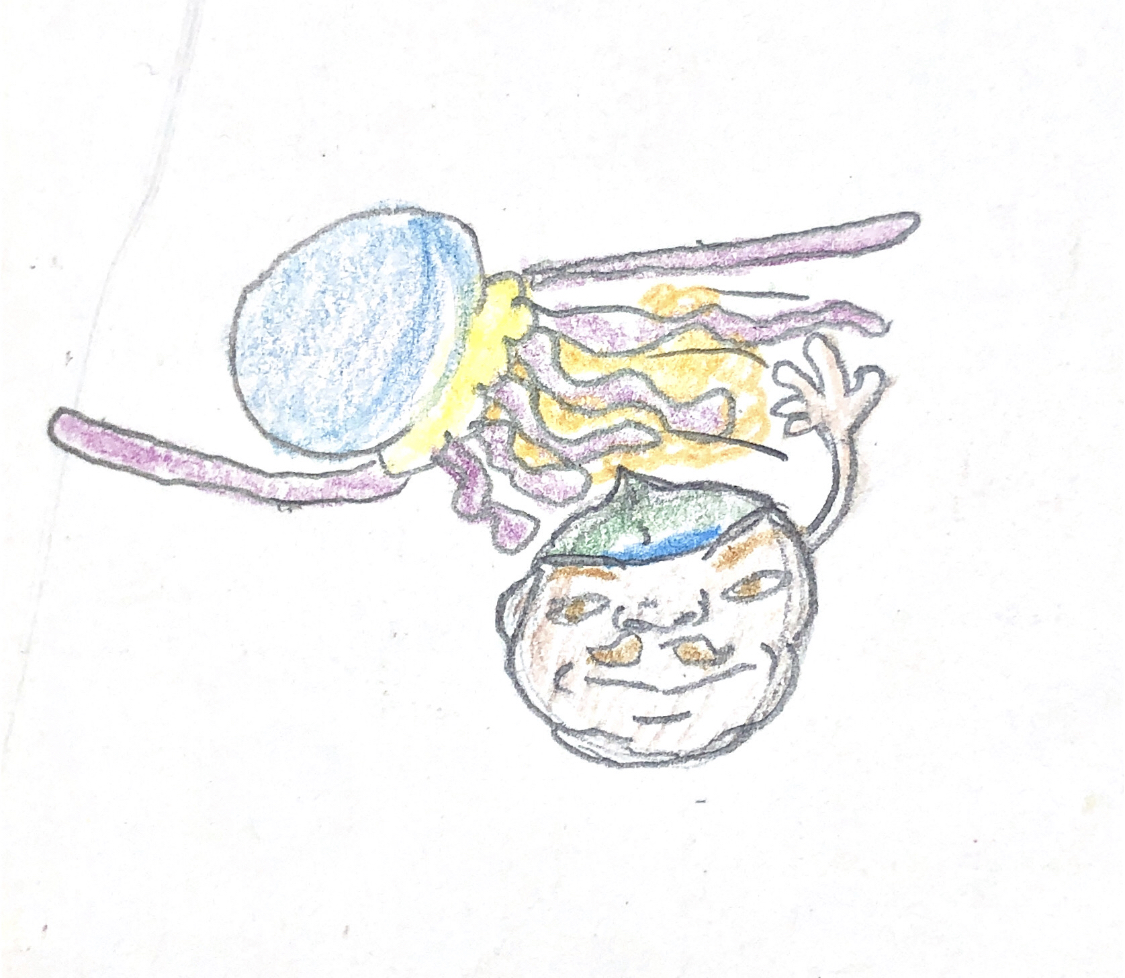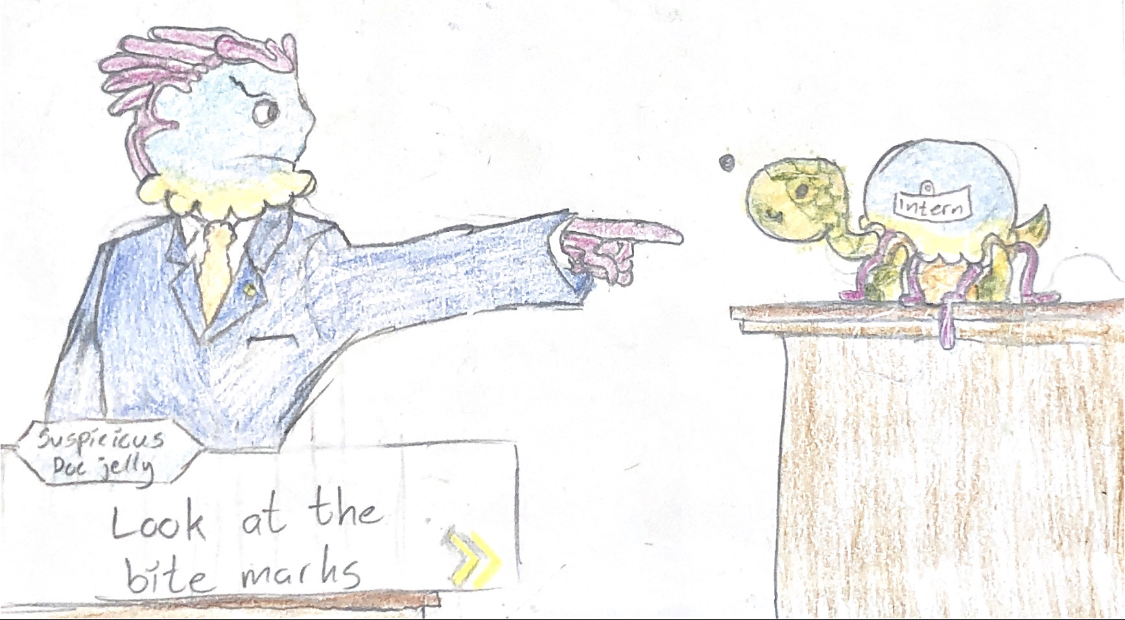
Thankfully we were able to document some of our findings, prior to critical faliure. And our methodology is layed out clearly before us, so fret not. First of all, lay witness to one of our final, glorious simulations of a humble hydrogen particle. We can start by defining the space this bugger moves in! We decided to put the origin in a corner of a cubical box, briefly described earlier, with sides (L) = 106metres. Our rationale behind this was more easily being able to decifer where in the room each particle would be, opposed to defining the origin in the middle. You see you are way more likely to be eaten by a turtle in the open ocean than you are by rocks, as you have less directions to worry about surveying. An upside to putting it in the middle, however, is that it would've made for an easy time defining the exit hole.
I discovered foot prints leading up to the back part of the computers

The way our particles knew to bounce, as you see to our right, isn't too complicated. All we have to do is check if the x-, y- or z-coordinate is greater than or equal to 0m or L (106m). As described earlier we then simply flip the relevant velocity in which the collision is executing a force upon, and we're golden. But how do you know which velocity to flip? We resorted to decomposing our vectors, so we first look at the motion in the x-direction, then y and so on, and so forth. Much like we should've decomposed our team into bite sized units to investigate after the outage... I found shels around the cables, I'm putting in a better effort than they are. The advantage to handling the problem this way, is it makes simulating the movement pretty intuitive after, and it allows you to look at each dimention on its own. The downside to it is you have to look at three times as many velocities and positions at a time. Just like the investigative team, not using my recent discovery of damaged wires, could it be teeth or even a beak?!
Now to how the nozzle was meant to be introduced before a certain someone decided to chomp the power cord. We were going to define an area at the xy-plane (where z = 0) and look at how many particles hit it, and at what speed, for a teeny speck of time. We'd then send the particles back into the box with a random position, and the same velocity, now this may seem odd, but it insures the gaussian distribution of velocity remains the same in all three dimentions, as this is how we're currently working. But the most important aspect to retian is the speed. We'd repeat this for a slightly less teeny speck of time until we had a rough idea about how many, and how fast these particles would exit. Giving us a change in momentum, once scaled up a little we can start playing with the rocket moving. I'll make this investigation move along myself if I have to, there is even a part of his jelly-uniform here! Given the power outage caused by a trusted inside source, which I very much think know who is, we can't really comment on the results of this part. But we can comment on what kind of numbers we'd be looking to achieve by the end of the trial and error process of balancing fuel load, and output. So we'll be moving on to achieving escape velocity!
"Escape" velocity = 549545087620063.94 m/s Escape velocity = 7771.741160478053 m/s Rotational velocity = 565.6253183645572 m/s
Those of you with keen eyes may have notices our slight squobble calculating the escape velocity, initially. It's a couple of magnitudes grater than you'd expect, only just beating out the speed of light by a factor grater than 106. At first this had us scratching our heads, cause clever as we are, even we can't generate more than infinate thrust with our humble engine. So combing over our backup simulation; we discovered the nightmare of any astrophysisist, a lacking '-'! It's alright, we have corrected it, you needn't cower in fear. If we compare these results to your earth, it has arotation speed of roughly 460 m/s, and an escape velocity of roughly 11.19 km/s or 11190 m/s, about twice that of our home planet. The escape velocity of justice, on the other hand, would be similar to our first result though.
Individual planet information. Masses in units of m_sun, radii in km,
atmospheric densities in kg/m^3, rotational periods in Earth days.
Planet | Mass | Radius | Atm. dens. | Rot. period |
0 | 3.99783741e-06 | 6711.6586857 | 1.096133467 | 0.86291327 |
Now, to see if these results line up we're gonna do a little comparing, which the investigative team refuses to do with my tips about the culprint. Earth has a slightly lesser radius, of 6 371 km, and a mass of about 5.97 x1024 while our planet has a radius of 6 711, and a mass of 7.6 * 1024. In which case we might expect a slightly greater escape velocity as the mass of our home planet is a fair bit greater than that of the Earth. So to check if the results were somewhat realistic we plopped earths values in as well and got the following:
Home planet = 7772.123310907152 m/s Earth = 7069.844614444543 m/s Difference with model 702.2786964626084 m/s
This gives us a more feesable result in terms of the relation between the two escape velocities, but it also shows that the way we're working it out, the escape velocity is only about 2/3 of what it should be at, sow we can assume our escape velocity would be closer to 12,336 m/s. However, we won't need to reach quite this speed, as we can compensate a bit with the rotational velocity of the planet. You  see since we have to reach a certain speed to escape the gravitational pull, this means not all the work is done by our rocket, a majority is, but the planet does help us out a bit. This makes the speed we need to achieve just under 12000 m/s, which is still a lot but more managable.
see since we have to reach a certain speed to escape the gravitational pull, this means not all the work is done by our rocket, a majority is, but the planet does help us out a bit. This makes the speed we need to achieve just under 12000 m/s, which is still a lot but more managable.
Now since the others at jelly labs refuse to take the right course of action it seems only one humble jelly can...
Cort is now in order, and the defence is as guilty as charged your honor! I have stacks of proof against this rascal in front of me! I have footprints, which could only have been made by someone with circular feet waddling around behind there! Where were you at during the time right before the critical faliure intern?!
meep
See your honor, the defendant isn't even trying to defend themselves, even more damning is the scales I found right nect to the foortprints!
bleh, click
OBJECTION!
I'm shaking my head at your foolishness intern, it was obvious you were behind there earlier unplugging all our cables, could you be an acomplice of the turtles?!
meep meep
Why of course I... You're not the prosocution here, you can't just fling out an outrageous accusation like me forgetting to plug them back in after games night! besides...

Only one kind of bite riddles the cables with marks like those; a beak!
Awfully quiet now huh?
meep
ppfft that's a completely sill- hold on that, your honor don't listen to his scheming words, just look at the horror he caused to our progress:

His schemes may work on everyone, but they won't fool me. Just look at his scheeming smile, he's up to something I'm telling you! You can't just throw me out, this is my lab, I will have you write an unneccesarily detailed report on this your honoooooorrr!